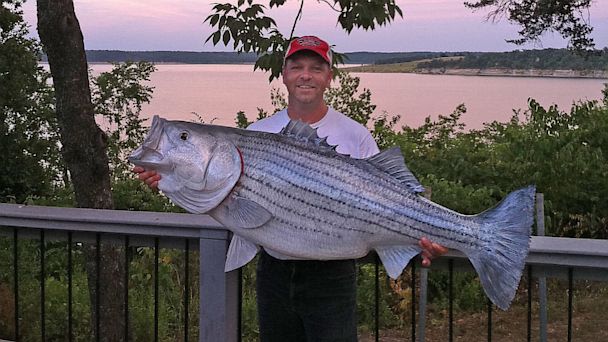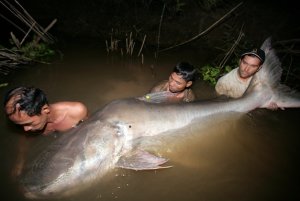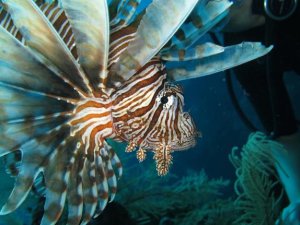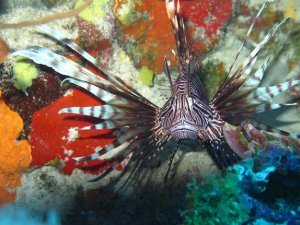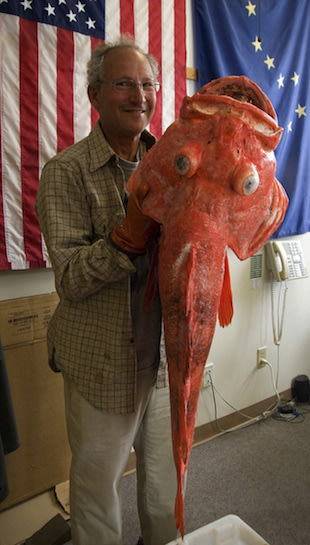This is crazy these two Slovakian guys caught this enormous catfish. The thing that is even more amazing about it is that they caught it on a homemade rod and reel. This is an amazing story!! It looks like a wells catfish from the video. You can see the video below. Don't forget to subscribe for more fishing info. Thanks.
A 19-year-old former Texas cheerleader has been named champion of Oklahoma's 14th annual Okie Noodling Festival after wrestling in a 72-pound catfish with her bare hands.
Marching on stage in a pink tank-top and cowboy boots with a massive catfish wriggling over her shoulder, Lucy Millsap of Lake Tawakoni, Texas, turned more than a few heads Saturday.
Slapping the fish on a scale, the fiery brunette revealed a catch outweighing the day's other 200 competitors’, which earned her a check for $1,500 and made her the first woman to win the competition's Big Fish category.
"My dad asked me if I wanted to fish in the women's division, and I said, 'Heck no.' I don't want to fish in the women's division. I want to beat the men," Millsap, a self-described "daddy's girl," told NewsOK after her big win.

Caters News Agency
The colossal catch earned the former high school cheerleader a mutually enormous check for $1,500.
It was Millsap's first competition, she said, though she's been noodling since she was just 5 years old.
Today she's also a proud member of the Bare Knuckle Babes, a group that showcases stunning women like herself in the sport.
"There's nothing like a catfish latching onto your hand and taking it with him. You don't have to look for him; he finds you. That's the best part," Millsap told NewsOK of the sport.
When Millsap pulled into the festival's parking lot Saturday afternoon with her dusty pickup truck carrying a red tub sloshing in its bed, she emitted an air of confidence. She had this.

@lucymillsap via Twitter
This was Millsap's first noodling competition though she says she's been doing it since she was only 5-years old, with this picture showing one of her earlier catches.
It's those late-night excursions that especially thrill and get the 19-year-old going, she said, after first practicing the sport under the cover of darkness when noodling was illegal in Texas.
Another competitor described the sport Saturday as a "romantic way" to interact with nature.
It's more than a challenging sport, said Millsap, who has had trips to the emergency room for injuries stemming from rusty nails in the water.
"If she's not noodling, she's fishing for crappie, getting muddy on a four wheeler, getting warm by a campfire and listening to Texas Country," her Bare Knuckle Babes profile reads.
"'If you like your food burnt put me in the kitchen,'" she added to the website.
ngolgowski@nydailynews.com

